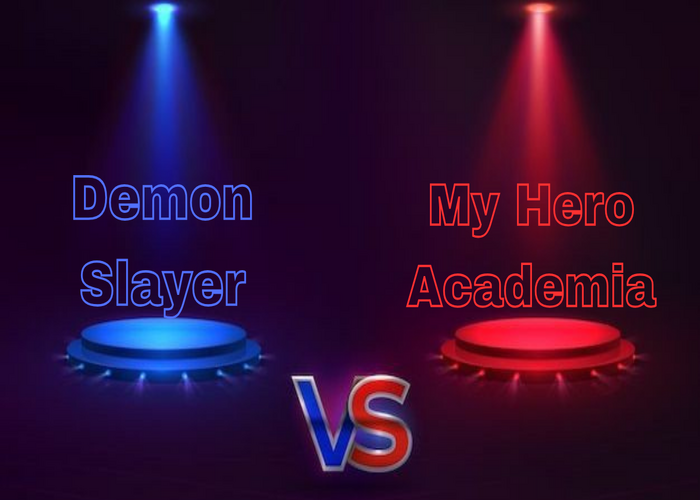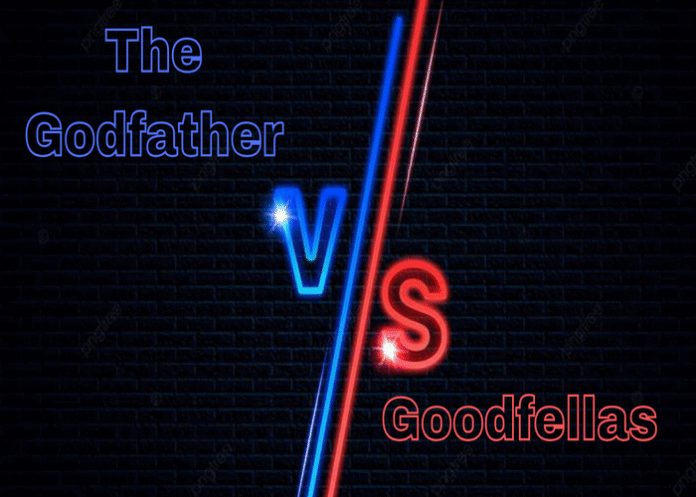
Two juggernauts. One ring. Buckle up, anime fans,we’re slicing through katana swings and Detroit Smashes to figure out who truly deserves the shonen crown. This isn’t your typical dry comparison,it’s sharp, fun, and just respectful enough to avoid a Quirk-fueled riot.
World-Building
Let’s start with the worlds,because every good fight needs a proper battleground.
Demon Slayer: Picture Taisho-era Japan, where every peaceful street corner might be hiding a hungry demon and every sword comes with a sob story. The world may not be massive, but it’s rich in atmosphere, from fog-drenched mountains to eerie drum houses. It’s like Studio Ghibli went goth and got really into demon hunting. This historical setting contributes a unique immersion, grounding the supernatural elements in real cultural textures that enhance the story’s emotional weight.
MHA: Now swap swords for smartphones. My Hero Academia gives us a modern society teetering on the edge of chaos, all thanks to Quirks,superpowers that range from “turn your skin into stone” to “explode stuff with your sweat.” Hero agencies, legal systems, and public safety infrastructure make the world feel alive, even if sometimes it feels like the writers needed an Excel sheet to keep track of it all.
Edge: Tie Demon Slayer delivers mood and beauty in a tight, polished setting; MHA gives us sprawling complexity with occasional potholes.
Story & Pacing
Let’s face it: no one wants to watch a 300-episode build-up to a mid-tier villain’s redemption arc.
Demon Slayer: Short. Sweet. Satisfying. It’s like the espresso shot of anime,hits hard and leaves you wanting more. No filler. No fluff. Just beautifully paced arcs, emotional punches, and an ending that actually ends.
MHA: This one’s running the full marathon. It’s full of powerful arcs and strong payoffs, but with great length comes great,bloat. Sometimes it sprints; other times it laces its shoes for five episodes straight. And don’t even ask how many times you’ll scream “JUST GET TO THE FIGHT ALREADY.”
Edge: Demon Slayer For tight pacing, elegant structure, and delivering on every plot point like it was Amazon Prime.
Power Systems
It’s time to ask the hard question: Would Tanjiro last five minutes in MHA’s world, or would he be knocked into next week by Mineta’s sticky balls?
Demon Slayer: Breathing techniques? Check. Demon Blood Arts? Check. Sunlight as a boss-level weakness? Big check. It’s simple and elegant,until the power scaling in the final arcs makes you wonder if everyone’s been secretly training in Dragon Ball Z.
MHA: Quirks are delightfully weird, wildly creative, and scientifically crunchy. But when Deku starts pulling out hidden Quirks like a magician at a birthday party, you start to question whether One For All came with DLC packs. That DLC joke is spot on, but it’s worth noting that One For All‘s evolution isn’t just gameplay padding,it ties deeply into MHA’s theme of legacy: a power passed down through generations, carrying the hopes, burdens, and growth of its previous users.
Edge: Tie MHA wins on creativity, Demon Slayer wins on clarity. Both stumble when things escalate.
Characters & Development
Let’s get emotional. Which series makes you cry like a kid who dropped his ice cream?
Demon Slayer: It weaponizes empathy. Every demon has a gut-wrenching backstory, every Hashira carries trauma like emotional baggage at the airport. Tanjiro’s kindness isn’t just refreshing,it’s revolutionary in a genre filled with angry yellers.
MHA: We’ve got Deku’s underdog glow-up, Bakugo’s angry therapy arc, and Shigaraki’s tragic descent. The character web is sprawling, and while not everyone gets the spotlight (RIP to half the Class 1-A cast’s relevance), the highs are high.
Edge: Tie MHA casts a wider net with complex growth; Demon Slayer hits deeper with fewer characters but stronger emotional gut-punches.
Animation & Art Style
Ah, the eye candy category. Who wins the “Pause to Screenshot Every Frame” award?
Demon Slayer: Ufotable didn’t just raise the bar,they yeeted it into the stratosphere. Every fight feels like a feature film. The water effects alone deserve an Oscar.
MHA: Studio Bones does great work with expressive animation and flashy battles. It’s solid. Reliable. But it rarely causes spontaneous internet meltdowns.
Edge: Demon Slayer No contest. MHA looks good. Demon Slayer looks legendary.
Cultural Impact & Influence
Who changed the game, and who’s just a really cool player?
MHA: It brought superhero culture into anime and became a gateway drug for Western fans. It’s responsible for thousands of cosplays, Reddit debates, and TikToks featuring Bakugo yelling at clouds.
Demon Slayer: Entered the chat, dropped Mugen Train, broke box office records, and left every other anime staring awkwardly at their budgets. It didn’t just trend,it dominated.
Edge: Tie MHA shaped the superhero-anime subgenre. Demon Slayer made anime the main event globally.
Legacy & Franchise Strength
We’re talking lasting power. Which franchise is still setting trends, and which one’s riding momentum?
Demon Slayer: Like a meteor,came in hot, burned bright, and continues to shine. Its concise manga means zero filler, and its anime adaptation is quality over quantity every single time.
MHA: A long-running beast with a lot of content, spinoffs, and solid movies. But it’s also at risk of overstaying its welcome,especially as the final arcs get more divisive.
Edge: Demon Slayer MHA has history. Demon Slayer has momentum, polish, and crowd control.
Final Verdict: And the Winner Is,
After all the Breathing Forms and Quirks have clashed, the dust settles. Both are titans, no doubt. But only one walks away with the championship belt today.
Winner: Demon Slayer
Why? Because sometimes perfection isn’t in how long you go,it’s in how well you use your time. Demon Slayer delivered an emotionally charged, visually stunning masterpiece with laser-focused pacing and jaw-dropping animation. It changed the game by executing flawlessly, not just by existing for years.
My Hero Academia deserves major respect,it’s a pioneer of modern shonen, especially in the superhero niche. But Demon Slayer? It’s the diamond-cut shonen. No fluff. Just flames, feels, and finality.
And don’t forget: MHA’s longevity and sprawling complexity might still impact future anime trends, shaping storytelling approaches and superhero narratives for years to come. So while Demon Slayer reigns supreme today, MHA’s legacy is far from over.
Final Words (Before the Fanbase Wars Begin)
Think MHA deserves the crown for its layered storytelling and deep character arcs? Totally fair. Prefer Demon Slayer’s clean execution and top-tier visuals? Preach on.
This isn’t the end of the debate,it’s just another checkpoint in the never-ending anime showdown saga. And whether you’re chanting “Plus Ultra!” or breathing in Total Concentration, we all win when anime hits this hard.
Now excuse us while we go cry to “Kamado Tanjiro no Uta” and then punch the air with “You Say Run” blasting in the background.
Key Points
- Animation Quality: Demon Slayer by Ufotable is so ridiculously pretty, it makes other anime blush. It’s like watching a movie, while MHA is, well, still really good, but doesn’t make you question if your TV ascended.
- World Scope: MHA built a whole superhero society with rules and everything feels like a real (but slightly chaotic) world. Demon Slayer’s world is cool too, but mostly just “here are demons, go chop them.” Less bureaucracy, more beheading.
- Story Pacing: Demon Slayer is a high-speed train of hype and tears it gets to the point! MHA is more of a scenic route with occasional detours (looking at you, filler arcs, okay, minimal filler, but you know the feeling!).
- Character Ensemble: MHA has more characters than you have friends, and somehow makes you care about most of them. Demon Slayer focuses on a tighter crew, so you really get attached, before someone potentially gets tragic.
- Villain Emotional Depth: Demon Slayer’s villains will make you cry over backstories involving pots or temari balls. MHA’s villains might make you write an essay about societal breakdown. Both are messed up, just in different flavors.
- Power System Creativity: MHA’s Quirks are basically a random superpower generator on shuffle so many cool, weird abilities! Demon Slayer’s breathing styles are, fancy sword forms based on breathing. Still cool, just less likely to give someone a Quirk like ‘Navel Laser’.
- Historical Setting: Demon Slayer said “Let’s go historical, make things aesthetic and slightly inconvenient!” It gives it a unique vibe MHA’s modern city can’t quite match.
- Genre Engagement: MHA is basically a love letter to Western superheroes, but make it anime and add more emotional breakdowns. Demon Slayer is more classic “slay the monsters” fantasy, albeit a very stylish one.
- Adaptation Consistency: Demon Slayer’s anime follows the manga so closely, it’s practically glued to it. No detours, just pure, unadulterated canon. MHA is also faithful, but hey, sometimes a little anime-original fun sneaks in!
- Cultural Impact Balance: Demon Slayer exploded like a perfectly animated Sun Breathing technique sudden, bright, everywhere! MHA’s influence is more like One For All, steadily building power and inspiring others over time.
Fun Facts
- Demon Slayer author Koyoharu Gotouge is so mysterious, their author photo is often a crocodile. Maybe the real demons, were the deadlines all along?
- Before MHA, Horikoshi had a one-shot called “My Hero.” It starred a guy who already had a superpower. Thank goodness his editor said, “Nah, make him suffer first, it’s funnier.”
- Tanjiro’s snazzy checkered haori isn’t just a fashion statement; it’s a traditional Japanese pattern called “ichimatsu moyo.” Wear it to your next formal event!
- Early concept art for All Might made him look less like a shiny, hopeful symbol and more like a grumpy old man who yells at kids to get off his lawn. Plus Grumpy!
- Nezuko’s bamboo muzzle? Besides stopping her from nibbling on humans, it also totally symbolizes her struggle to keep her humanity! Deep and stylish.
- The seating chart in Class 1-A isn’t random! Horikoshi puts rivals and besties near each other to maximize the dramatic (and comedic) potential. He’s playing 4D chess with desk assignments.
- Those cool elemental effects in Demon Slayer’s breathing styles? Totally visual flair! The characters aren’t actually summoning water dragons. It’s just really, really enthusiastic sword choreography.
- Horikoshi is a huge comic book nerd. Like, knows his X-Men from his Justice League nerd. It’s why MHA feels like a superhero epic mashed with shonen tropes.
- Zenitsu’s whole “only knows one move but is terrifyingly good at it” thing? It’s based on real sword-drawing techniques (iaido). So yeah, he’s a napping sword genius. Don’t wake him up.
- Squint at the U.A. High logo. It’s secretly the kanji for “hero” (英)! Design Easter eggs, activate!
- Inosuke’s boar head isn’t just a fashion choice; it’s a tribute to the mama boar who raised him. D’aww, right before he headbutts you.
- Deku was originally supposed to have a Quirk from the start, but the editor suggested making him Quirkless. Because nothing says “relatable protagonist” like starting at zero!
- Demon Slayer is set in the Taisho era (early 1900s Japan), a time when Japan was mixing old traditions with new Western stuff. Hence, demons vs. guys in cool uniforms with swords.
- Shigaraki’s gross hands? They’re from his dead family. It’s a heavy symbol of his trauma, and probably makes washing up a real pain.
- A lot of MHA character names have hidden meanings related to their Quirks or personalities! Like, Bakugo’s name literally has kanji for “explode” and “strength.” Subtle.

